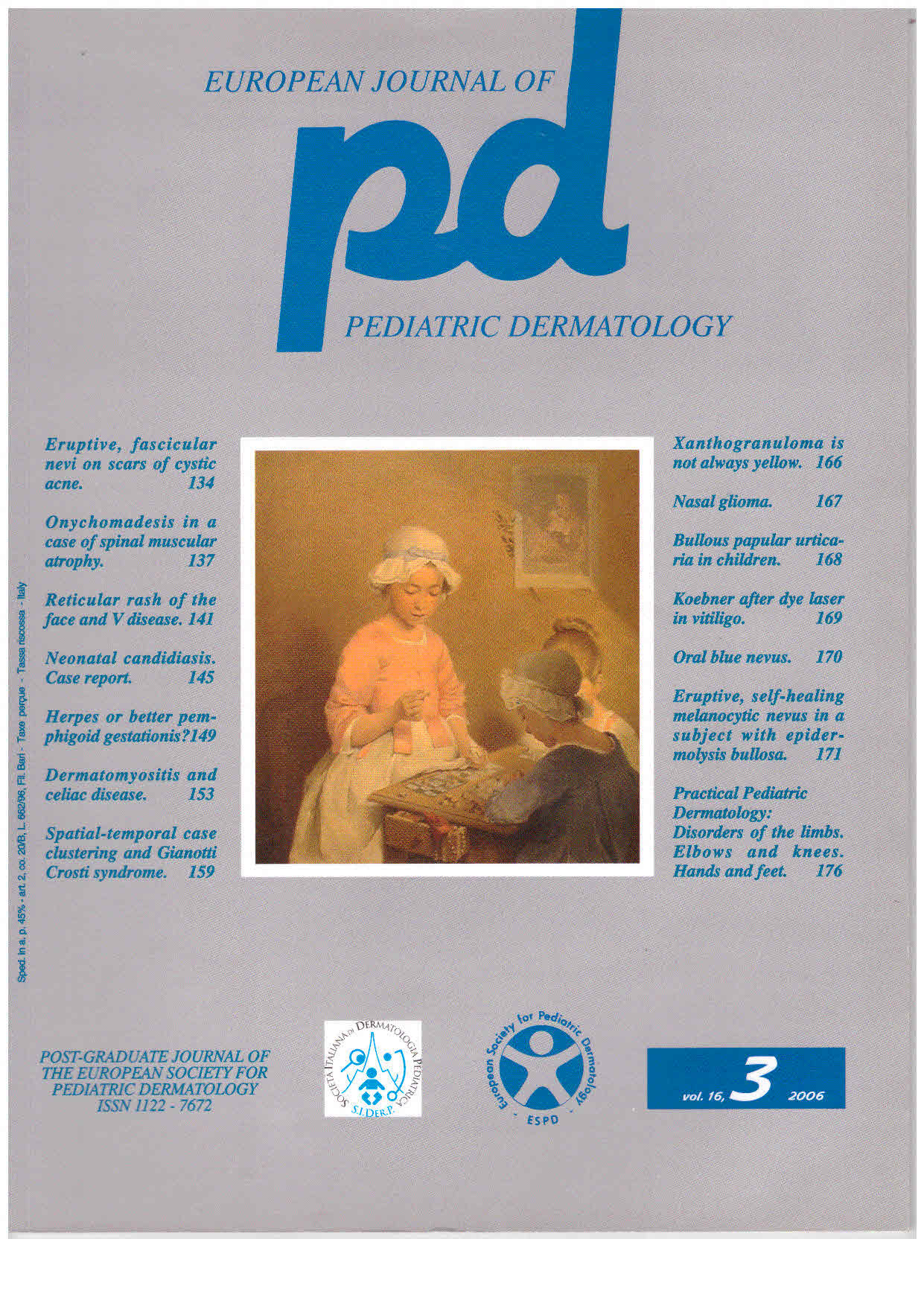Spatial-temporal case clustering in children with Gianotti-Crosti syndrome. Systematic analysis led to the identification of a mini-epidemic.
Downloads
How to Cite
Demattei C., Zawar V., Lee A., Chuh A., Molinari N. 2006. Spatial-temporal case clustering in children with Gianotti-Crosti syndrome. Systematic analysis led to the identification of a mini-epidemic. Eur. J. Pediat. Dermatol. 16 (3):159-64.
pp. 159-164
Abstract
This report was aimed at investigating spatial-temporal clustering in children with Gianotti-Crosti syndrome (GCS) in retrospective study carried out on patients of a private clinic in India. We retrieved clinical records of all children (below 12) diagnosed with GCS in 30 months, and documented the dates of diagnosis and residential addresses. We investigated for spatial-temporal clustering by the Kulldorff scan test. 47 clinical records of children with GCS were retrieved. Four children with residential addresses outside the normal catchment area were excluded. Of the remaining 43 children, we detected a significant cluster of three children (p = 0.05) in Niphad. We corrected for bias as we did not observe all the cases in the same district, but still arrived at the same cluster result (p = 0.044). We found that a 15-month-old male already had the GCS eruption when he attended a wedding party. An 18-month-old male developed GCS eruption five days after attending the party and a two-year-old female developed the eruption nine days also after attending the party. We subsequently found that a fourth child developed symptoms compatible with GCS eight days after attending the party and was brought to another medical practitioner. We thus identified a mini-epidemic with spatial-temporal analysis. Significant spatial-temporal clustering exists for GCS. Such might be supportive of an infectious etiology, possibly a primary viral infection. The infectivity is likely to be low. Spatial-temporal clustering is a model for which epidemics of other exanthems may be identified.Keywords
Gianotti-Crosti syndrome, Spatial-temporal clustering

